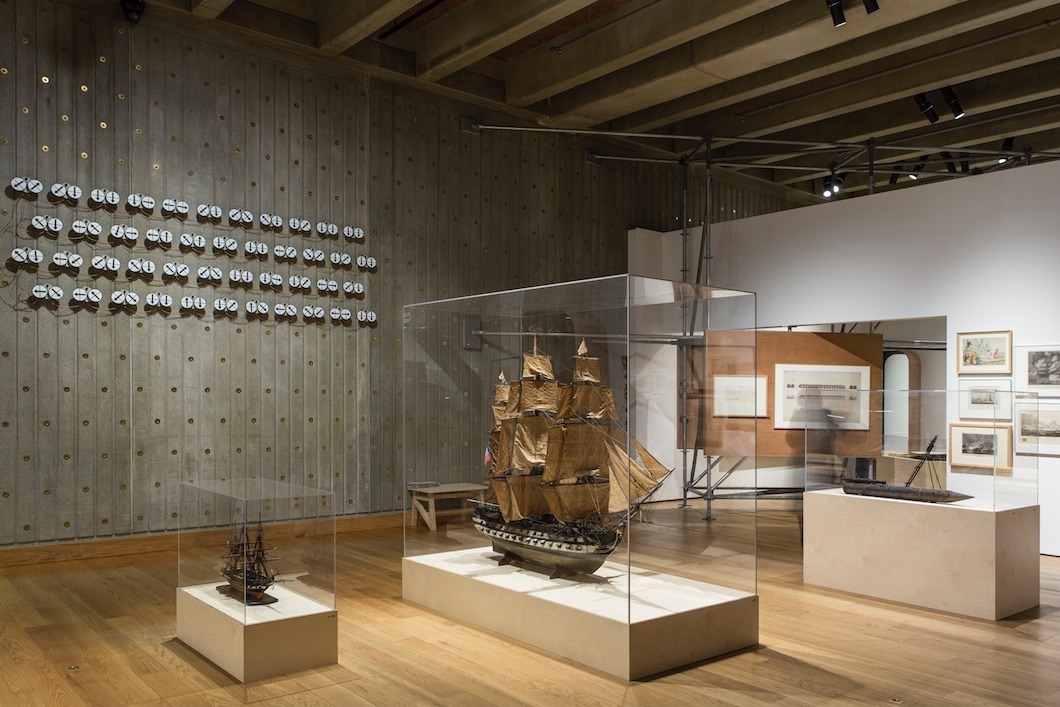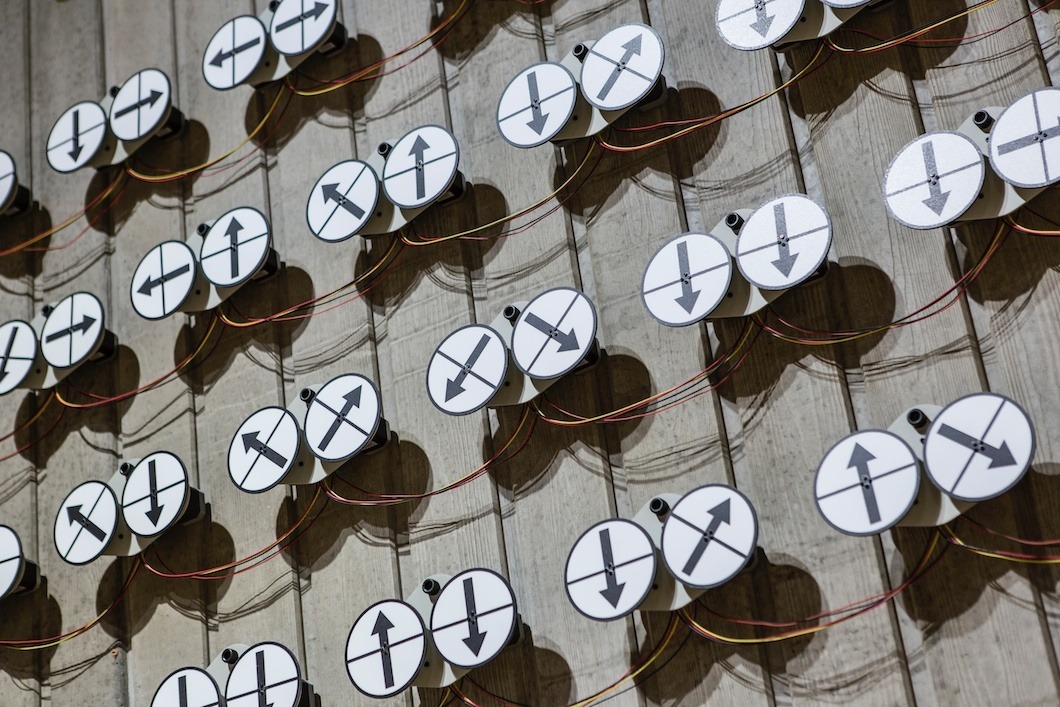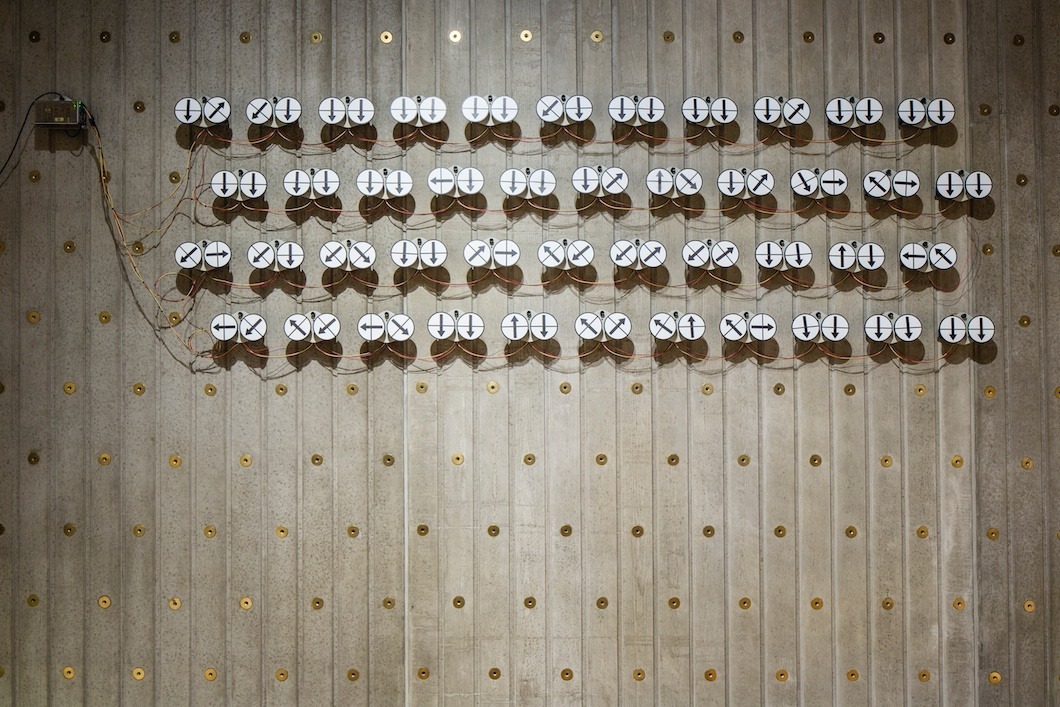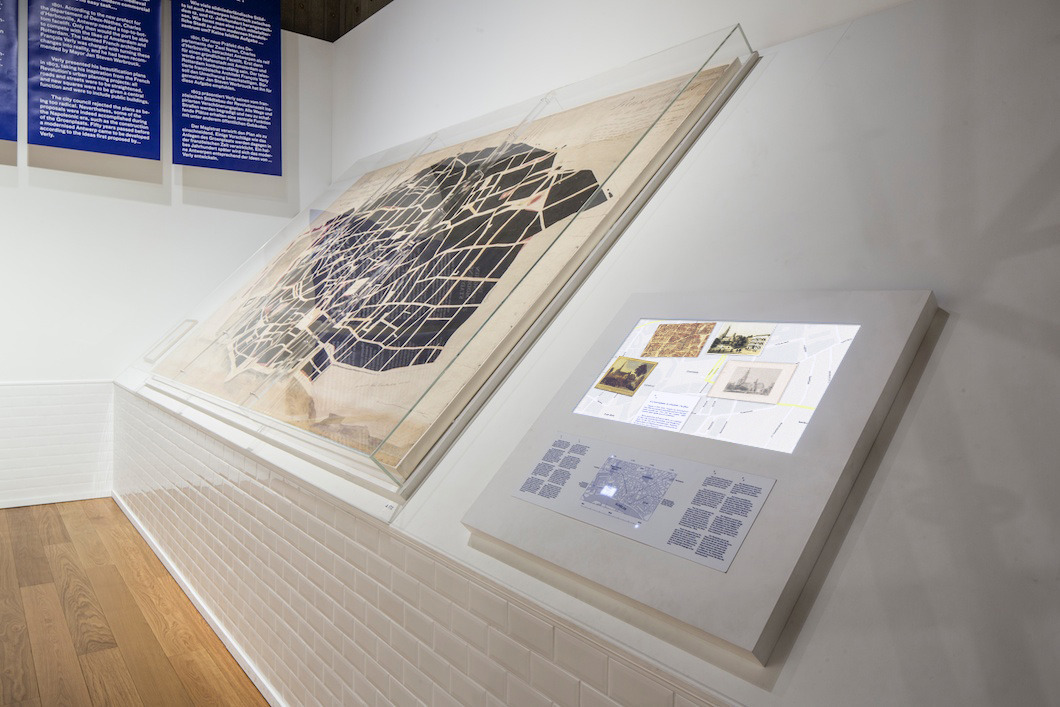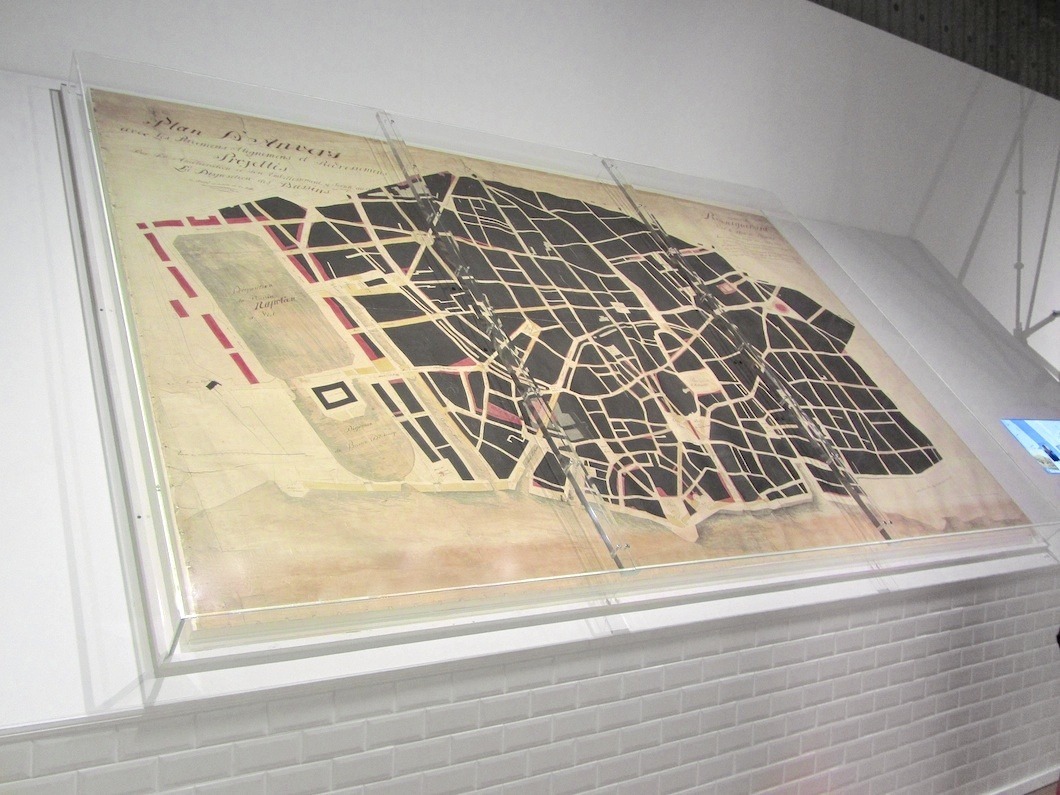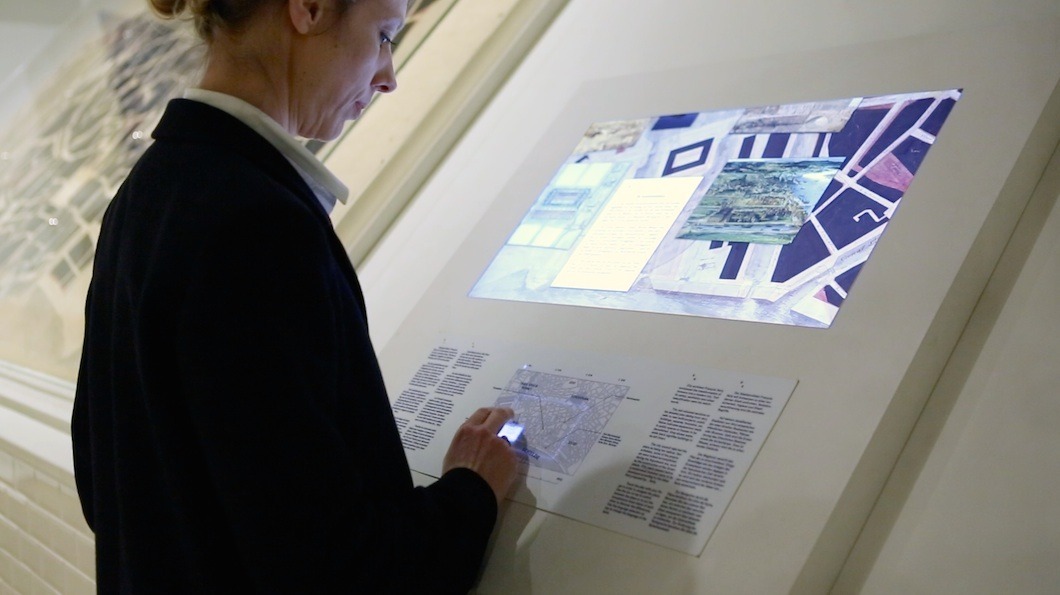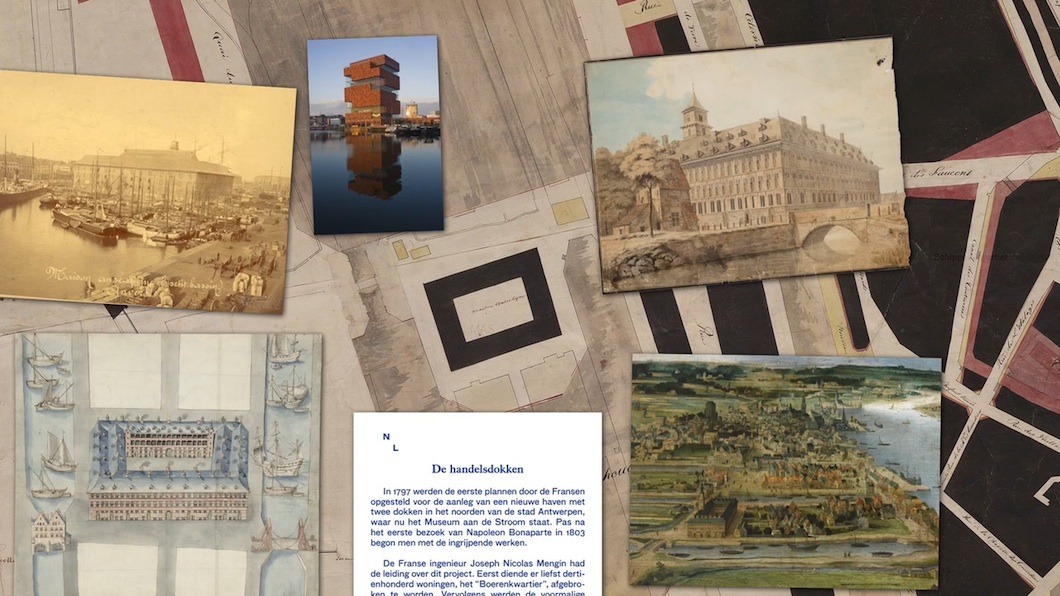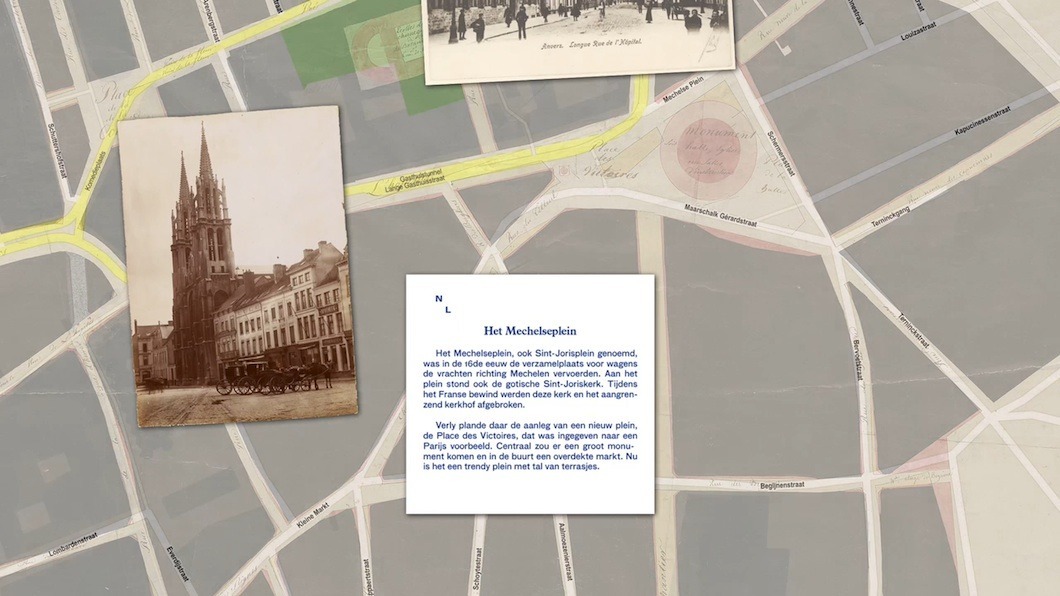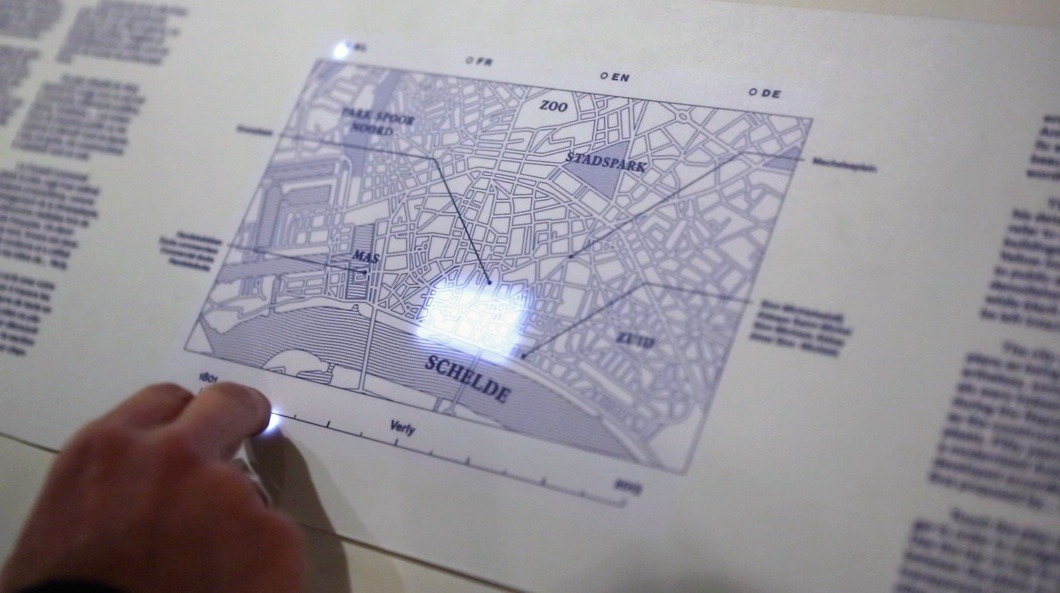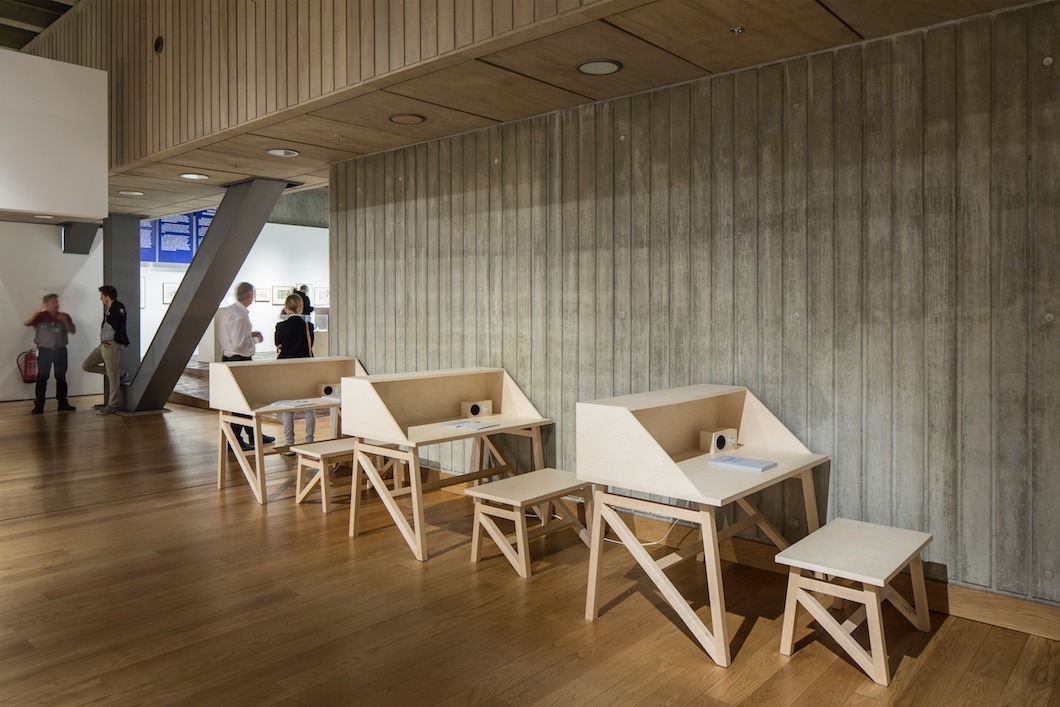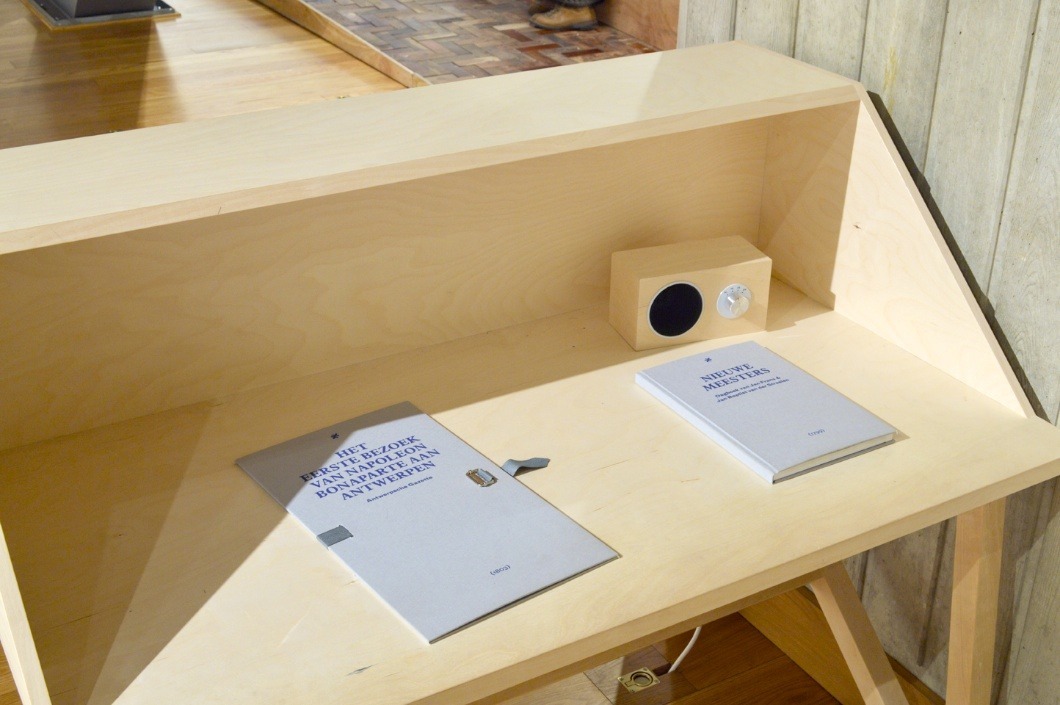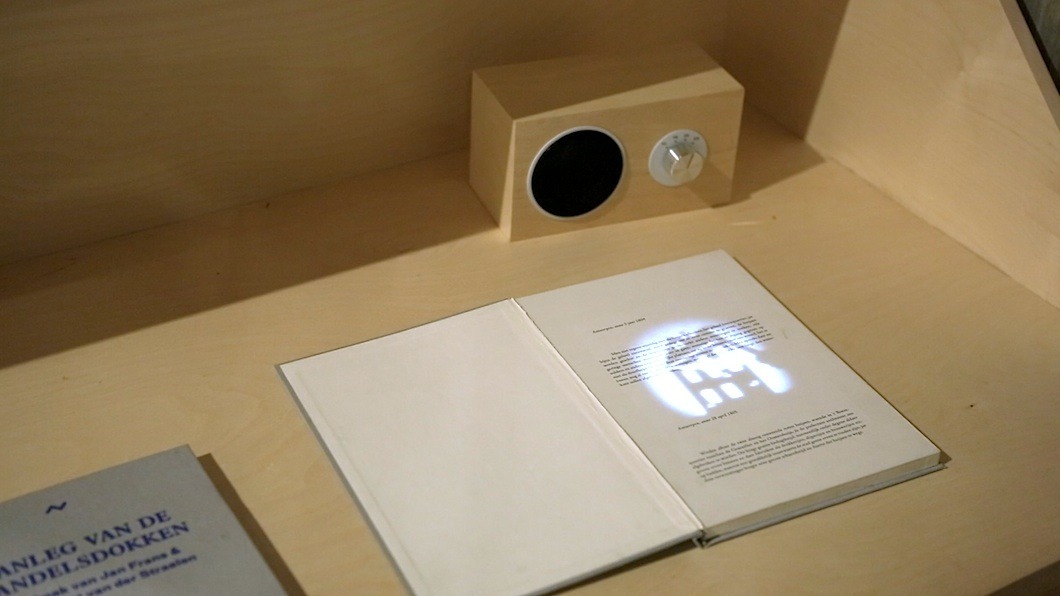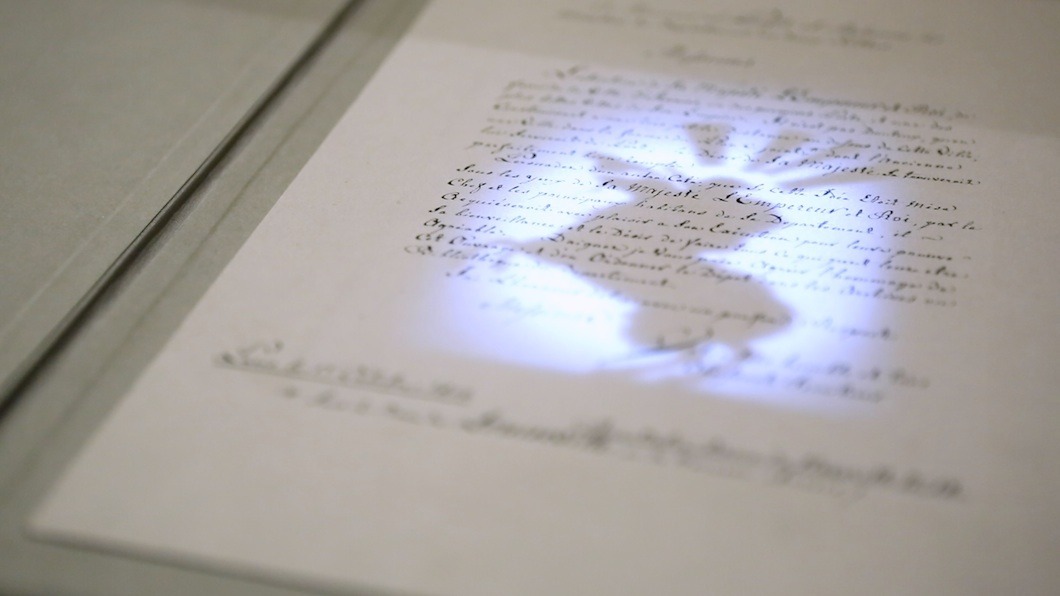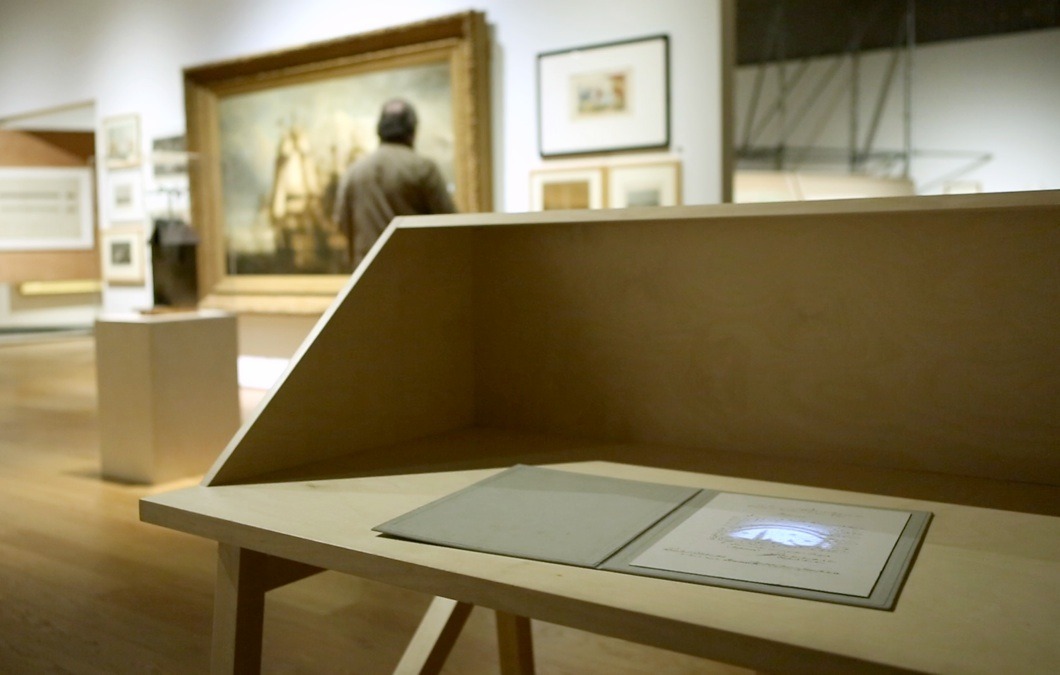For the exhibition 'Bonaparte at the Scheldt' Unfold designed and
developed all the interactive and dynamic content. Since Unfold was
also co-responsible for the
overall
design of the exhibition, the goal was to seamlessly integrate
the interactive content into the scenography and to hide as much of
the technology as possible in order to make the content come to
life.
Four secretary desks with diaries on them relay the personal
stories of Antwerp citizens during the French occupation. Upon
opening one of the diaries, a voice emitted from the desk radio
starts reading the stories printed in the book. A dial on the radio
allows you to change the language of the voiceover. A few sentences
into the text the physical paper and text come to live with a
shadow play animation glowing though the paper and illustrating the
story.
An electromechanical display resembling modern day LED scrollers.
The individual letters are displayed using semaphore flag signals,
a type of signal used to send messages between naval vessels and in
Napoleon's famous Chappe Optical Telegraph Network. The
installation symbolises the main theme in the exhibition, the
rivalry between France and England. The display alternates between
two sentences: Nelson's famous signal
'England expects that
every man will do his duty' from the battle of Trafalgar and
the French equivalent
'La France compte que chacun fera son
devoir' which Napoleon used almost 10 years later in the Battle
of Plattsburgh. A chart in the catalog allows visitors to decode
the signals.
A central piece in the exhibition is the architectural masterplan
for Antwerp made in 1803 by François Verly. Not much of the
ambitious plan was executed but an interactive map allows you to
explore how his radical changes would alter the city and how much
was actually implemented. In order to do so two high resolution
scans of historical city plans, the plan from Verly and one from
Dubray showing the actual city in 1801, were painstakingly mapped
onto a current day street plan. A sensitive touch area in the
graphics below the large screen allowed visitors to navigate
through the maps, with a slider one could fade between the maps and
transparently overlay one onto the other. Navigating to specific
hotspots would trigger historic images and texts detailing the
changes made to the city based on Verly's plan.
Unfold: coordination, concept, historic research, installation
design, hardware and construction.
Indianen: interaction design,
graphic design, animation and software development.
Etoile
Méchanique: technical design, construction and
installation of the semaphore wall.
Tom Langhorst: audio production
photo courtesy:
fig. 01-05, 10: photography by Kristof Vrancken
fig. 06-09, 12-15: photography by Unfold
fig. 11: photography by Indianen
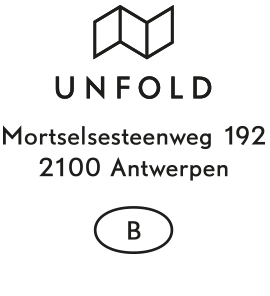 contact
contact